INTRODUCTION
More than ten months have passed since the first confirmed case of COVID-19, and nine since the announcement of a pandemic. During this time, our lives have changed immeasurably and it is only recently that we’ve truly learned to live with social distancing and the required hygiene processes.
THE FOOD SECTOR AND COVID-19
The food sector has been heavily impacted by the epidemic, despite there being no scientific evidence to link the transmission of COVID-19 with food.
Globally, the pandemic’s impact on food supply systems, and all dimensions of food security, has been severe. While measures to curb the spread of the virus may have narrowed, its effect is still being felt across the supply chain – from producers to processing plants and logistics. Quarantine measures and transportation blocks and restrictions have slowed the supply of fresh foods, causing increased levels of food loss and waste, while also preventing farmers from accessing markets, thereby limiting their production capacities and diminishing sales capacity.
Furthermore, obesity is now identified as an important risk factor. It has been noted that obese people are 2.4 times more likely to have serious problems when they contract COVID-19. At the same time, junk food consumption has increased and exercise decreased during lockdowns. This could all have a serious impact on health.
During these months, there has been an intense debate within the food industry as to how to eliminate or at least reduce the risks associated with COVID-19. This debate has led to new rules for each step of the food production process, all aimed at optimizing food safety.
This discussion concerning COVID-19 and food safety has been evident from our analysis of information sources, such as news, scientific papers, regulatory documents. Using the SGS Digicomply platform, we have been able to use this data to gain insights into the COVID-19 related trends affecting the sector.
We will now review and compare a wide variety of documents – regulatory, scientific, guidance and news – from a variety of countries – Australia, Canada, Japan, China, EU, UK and USA – gathered between January and September 2020.
DATA ANALYSIS
In the plot below, you can see the general trends relating to COVID-19 related posts collected by our database in the designated time period. Internationally, a peak was observed in April, which was matched by similar peaks in the EU and US. Posts covering COVID-19 related topics then remained high in these markets, with a second summer peak between June and July. The more recent peak is also noticeable in the UK.
CLASSIFICATION BY TYPE
Digicomply defines the nature of the post using different types – Regulation, Guidance, News, Scientific. If we break down the number of food safety posts by document type, you can see the majority of the posts are related to News. In the US alone, there were 257 News posts in July.
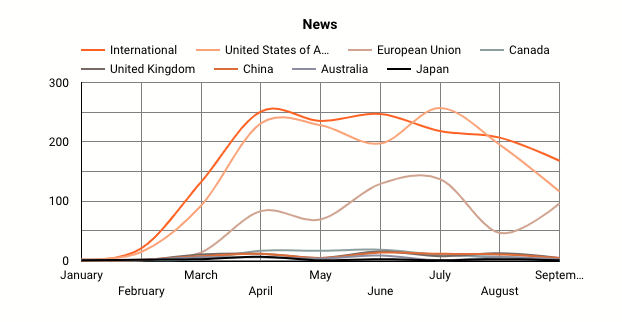
Looking at the US, we find many posts relating to COVID-19. These include Daily Roundups and Pandemic-Produced Trends.
We also find further examples from other markets including:
- - Seeding of outbreaks via contaminated fresh and frozen food
- - WHO announcements that people should not fear the spread of COVID-19 via food and food packaging
- - EU warning Romania and the Czech Republic about food safety rules
-
Guidance documents are the second most numerous type – for example, an explanatory note that is not legally binding but which can assist compliance. These may be designed to help the food industry manage the emergency.
Examples might include:
- Recommendation of the European Systemic Risk Board of May 27, 2020 on restriction of distributions during the COVID-19 pandemic (ESRB/2020/7) 2020/C 212/01.
- Guidelines for the prevention and control of the new coronavirus pneumonia epidemic for meat processing enterprises
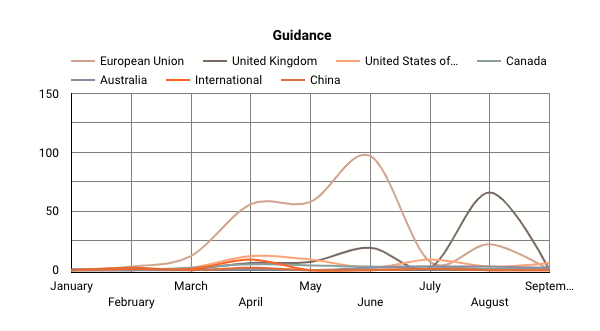
Looking at Regulations, we see a ‘double-peak’ for the EU, the ‘International’ market, and, although less evident, the US.
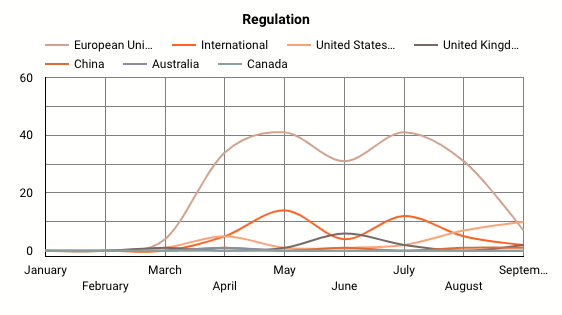
It is possible to interpret this ‘double-peak’ as the initial response to containment of the virus, followed by new regulations to enable co-existence with the virus.
Examples would include.
First peak:
- Circular of April 23, 2020 – temporary business support measures for the current health emergency from COVID-19 with regard to the new food labelling requirement.
Second peak:
- Federal law on provisional measures to prevent the dissemination of COVID-19.
When looking at Scientific documents, we observed a peak in April. This occurred at the most critical moment of the spread of the virus and at a time when there was still very little information about SARS-CoV-2. For example, “COVID-19 and the risk to food supply chains: How to respond?"
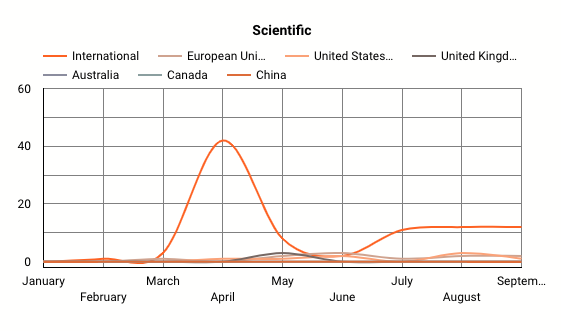 Digicomply also allows us to interpret the same data by looking at specific topics. The primary topics in this analysis are ‘Trade, Market and Official Controls’ and ‘Food Safety and Security’.
Digicomply also allows us to interpret the same data by looking at specific topics. The primary topics in this analysis are ‘Trade, Market and Official Controls’ and ‘Food Safety and Security’.
Scrutinizing the data in this way we again see two peaks. The first is in April, during the emergency phase, followed by a later peak in September. The latter peak can be linked to increased government activity as countries move into the new normal. This allows the definition of new laws to protect citizens, followed by interpretation.
There is also the possibility that the second peak may also be linked to the second wave of COVID-19 cases that many countries are experiencing. This has created a need to target the virus using the scientific knowledge that has been gained during the pandemic.
Examples found in September include:
- Consolidated text: Communication from the Commission Temporary Framework for State aid measures to support the economy in the current COVID-19 outbreak
Furthermore, as previously anticipated, there has also been an increased attention on the link between obesity and COVID-19. This has meant the generation of more documents aimed at protecting health and therefore preventing COVID-19.
Examples include:
- Researchers hit food industry with double blame: Obesity pandemic and COVID-19 severity
- Action on Sugar and Action on Salt call for unhealthy advertising ban during lockdown
- Coronavirus and obesity: Doctors take aim at food industry over poor diets
DATA REPORTED HAS BEEN UPDATED UP TO 27TH SEPTEMBER 2020



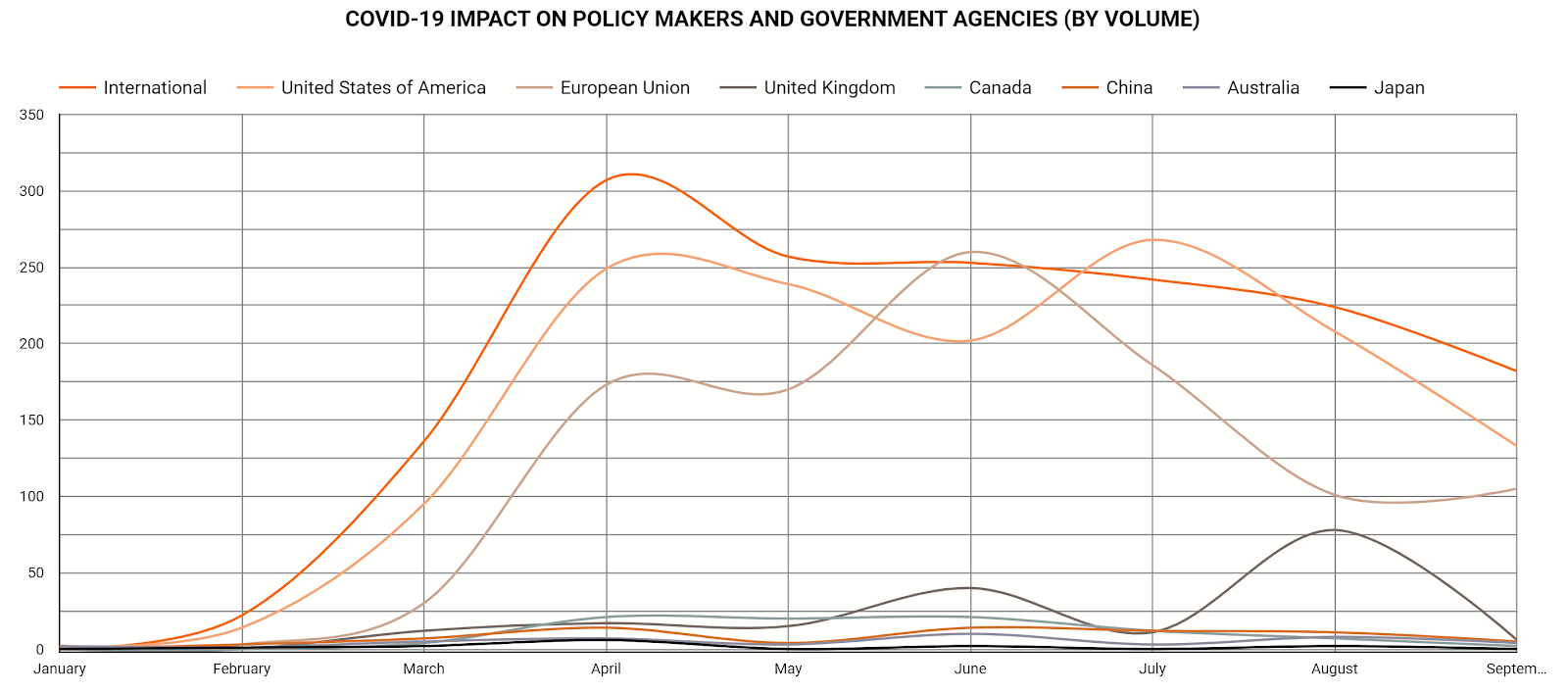
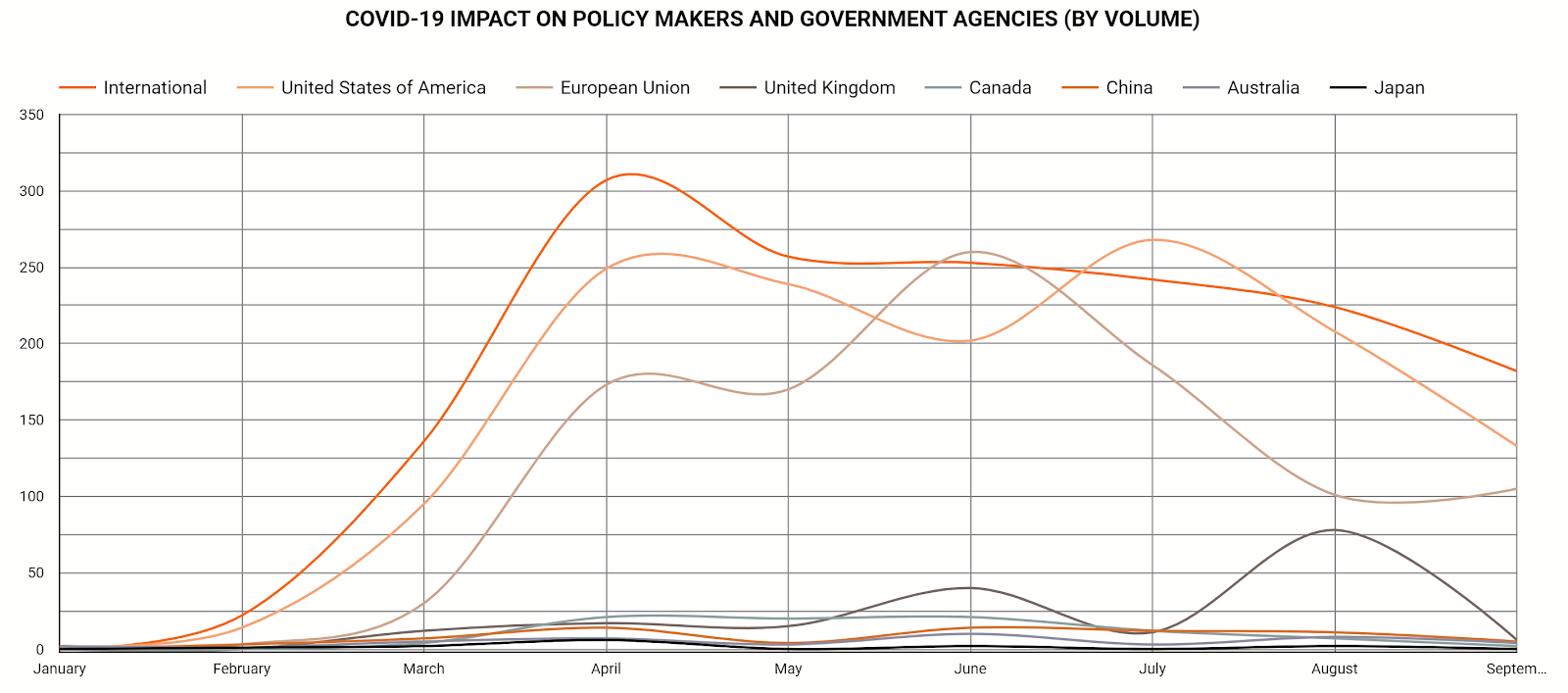

.webp?width=1644&height=1254&name=Food%20Safety%20Dashboard%201%20(1).webp)
